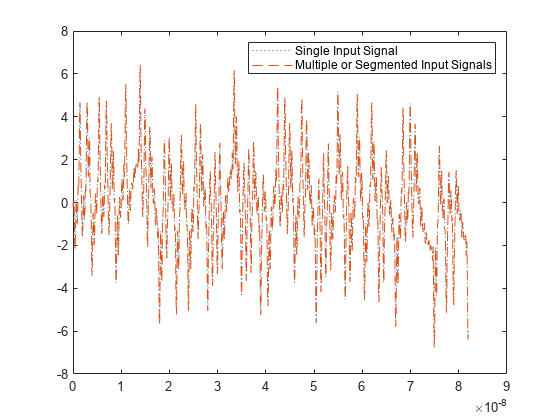timeresp
Time response for rational objects
Description
[
computes the time response y,t,xf] = timeresp(h,inputsignal,ts)y, sample time t of
y, and final states of the system xf. The
function calculates the time response for a rational, rfmodel.rational, or
rationalfit object h, using the time-varying input signal
inputsignal at the specified sample time
ts.
Examples
Input Arguments
Output Arguments
More About
Version History
Introduced in R2007aSee Also
freqresp | pwlresp | rationalfit | makepassive | writeva | ispassive | rfmodel.rational | rational
